The Sweet History of Rowntree's
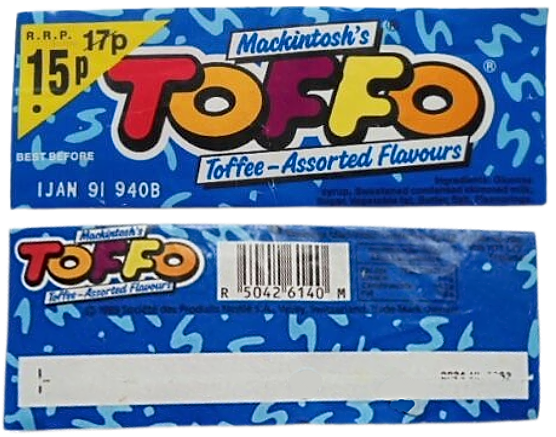
Rowntree's is a much-loved British confectionary company based in York, England, that produces popular mass-produced sweets including Fruit Pastilles, Fruit Gums, Jelly Tots and Randoms.
Here you can learn essential facts about the company's history, from its humble beginnings in 1862, to the present day.
The company has been a subsidiary of the Swiss multinational food giant Nestlé since 1988. At the time of the takeover, Rowntree's was the fourth-largest confectioner in the world.
Rowntree's popular chocolate products have been produced by Nestlé since the takeover, and these include Kit Kat, Aero and Smarties.
Disclosure: This page contains affiliate links. As an Amazon associate, I earn from qualifying purchases.
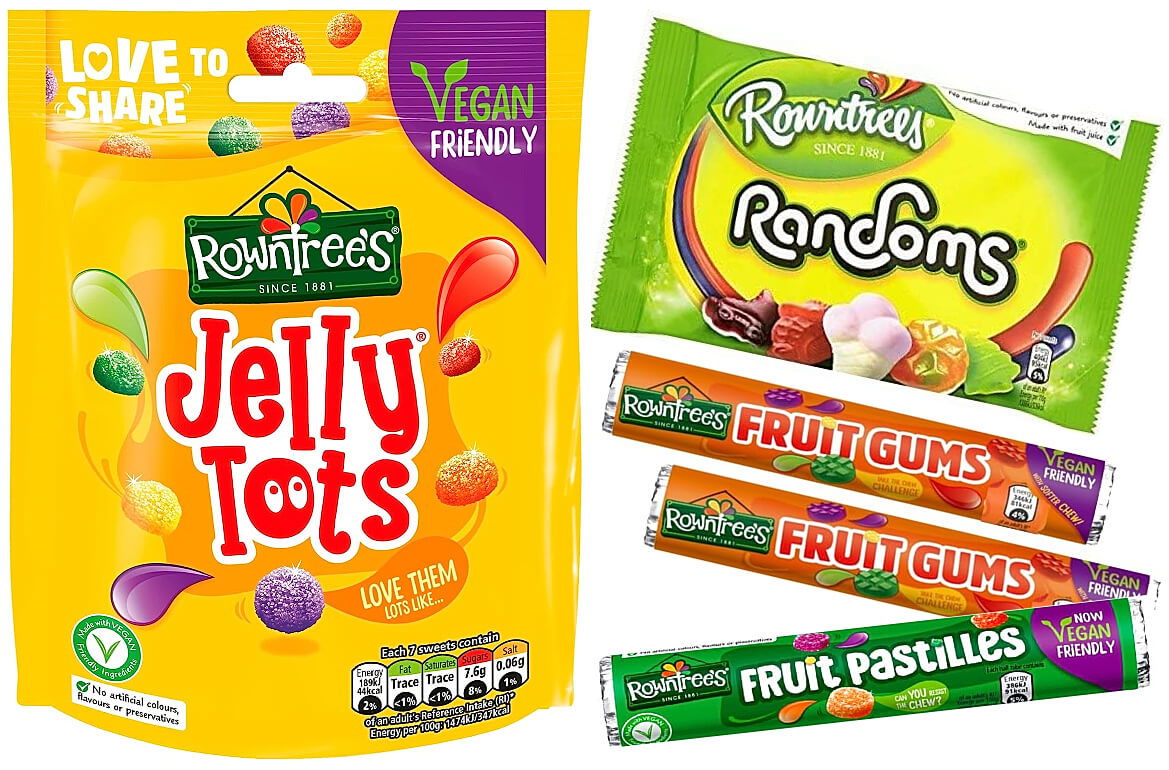
1862 to 1899 - The early years
Rowntree's was founded in 1862 by Henry Isaac Rowntree, who was a Quaker. He acquired the cocoa business from the Quaker Tuke family.
When he passed away in 1883, his brother Joseph became the owner.
The first premises was based at Castlegate in York. In 1864, production moved to Tanners Moat, which was the site of an old iron foundry, with cottages and a tavern next to a river, which was bought for £1000.
By 1869, the company was struggling financially, which led to Henry's brother, Joseph, becoming a partner, forming H. I. Rowntree & Co.
Fruit Pastilles were Rowntree's most popular product in the 1880s. The brothers hired the French confectioner August Claude Gaget, who created the recipe for the sweet. After being introduced in 1881, within just a few years, Fruit Pastilles accounted for 25% of overall sales by 1887.
In the 1890s, the company had been transformed from a small family outfit into a major, large-scale producer of confectionary.
In 1893, Clear Gums were launched, which eventually became Fruit Gums, and they are still produced today.
The profits made from Fruit Pastilles enabled the company to purchase a Van Houten Press, which was used for producing cocoa essence.
In 1899, Rowntree's launched their first milk chocolate block, after purchasing a cocoa plantation in the West Indies in 1898.
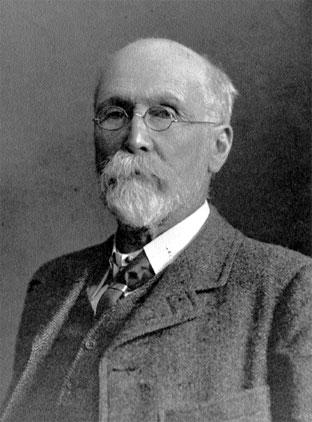
Public domain photo of Joseph Rowntree (free for reuse)
1900 to 1929
During the first few decades of the 1900s, there was a growing market for milk chocolate, but Rowntree's struggled to develop a successful product, and could not compete with Cadbury and Frys. These two competitors merged in 1918, and Rowntree's received an invitation to join the merger, but declined.
The company was keen to develop a rival product to Cadbury's Dairy Milk, but failed to produce anything as cheap or of the same quality.
Joseph Rowntree's second son, Seebohm Rowntree, inherited the struggling company in 1923, taking the place of his 86-year-old Father as chairman. Joseph passed away on 24th February 1925.
Seebohm had been a researcher for Rowntree's since 1889, analysing ingredients and rival chocolate brands at a special laboratory which he had set up.
In 1926, Rowntree's bought the Cowan Company of Toronto Limited for $1 million, which was based in Toronto, Canada.
Walnut Whip manufacturer, W & M Duncan and Company, was acquired by Rowntree in 1927, although the product retained the Duncan's brand name for several decades.
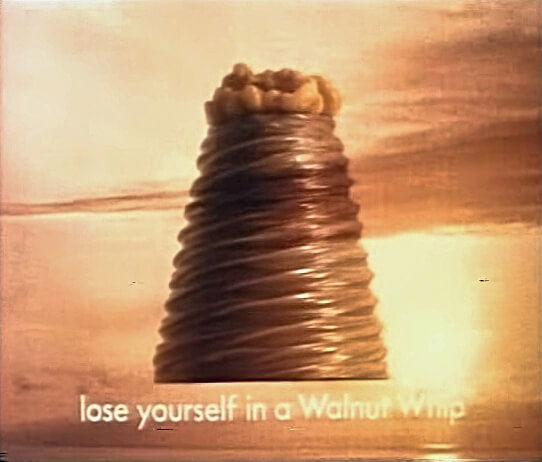
This is a still from a 1970s British TV advert. Notice how the swirls have a deeper texture than the modern Nestlé version.
1930s to 1950s
In 1930, Rowntree's almost went bankrupt, but there would be a change of fortune following the development of new milk chocolate brands. This was thanks mainly to George Harris, who was appointed marketing manager for chocolate bars in 1930. He had a deep understanding of the market, and was also very passionate about chocolate.
In 1935, it was decided to abandon the idea of producing a chocolate block to compete with Dairy Milk. Instead, Rowntree's launched several completely new chocolate products, which would all prove to be hugely successful.
In 1935, Aero and Kit Kat were launched, and 1937 saw the introduction of Dairy Box, which featured assorted chocolates.
In 1938, the company started selling loose chocolate beans, and these were eventually sold in cardboard tubes and re-branded as Smarties.
George Harris was made company chairman in 1941.
Due to World War II, confectionary products were rationed in the UK from 1942 until 1953. Nonetheless, Rowntree's still managed to launch their new Polo mint sweet in 1948. Polo is now manufactured by Nestlé and does not bear the Rowntree's name.
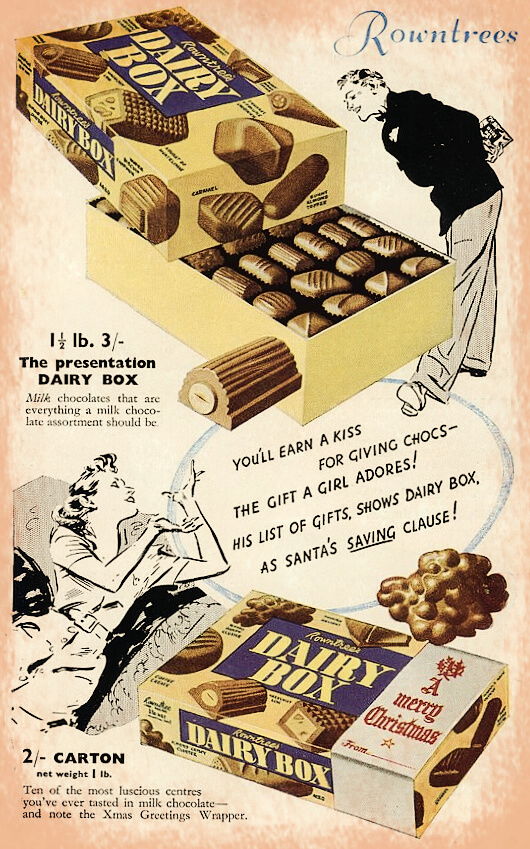
1960s
During the 1960s, Rowntree's entered the European market and set-up production in Hamburg (Germany), Dijon and Noisiel (France) and Elst (Holland).
1961 saw many big changes for the company. General Foods proposed a takeover, offering £37 million, but this was rejected.
Also in 1961, Rowntree's set up an agreement with the American chocolate manufacturer The Hershey Company (better known as Hershey's), who would produce Rowntree's products under licence for the U.S. market.
In 1962, came the launch of After Eight, a wafer thin mint chocolate, featuring a peppermint oil filling encased in rich dark chocolate.
In 1965, the company launched Jelly Tots, and later Candy Tots and Tiger Tots.
Rowntree's merged with John Mackintosh and Co. in 1969, to form Rowntree-Mackintosh, enabling them to produce Rolo, Toffo, Munchies, Caramac, Quality Street and Tooty Frooties.
1970s
In 1971, Rowntree Mackintosh acquired the French company Menier Chocolate, a producer of high quality cooking chocolate, which was established in 1816. Ownership transferred to Nestlé, after their 1988 takeover of Rowntree Mackintosh.
in 1972, the company acquired Hoadley's Chocolates, an Australian confectioner which was established in 1913 and produced the popular chocolate bars Polly Waffle and Violet Crumble.
Yorkie and Lion Bar are launched in 1976
1976 was the year of the infamous drought and long hot summer in the UK, and Rowntree Mackintosh launched two new chocolate products in this year, which are still produced by Nestlé today - Yorkie and Lion Bar (now simply known as Lion).
An iconic "Keep on Truckin'" TV advert to promote Yorkie was launched in 1976, and featured a lorry driver eating the chocolate bar, with American style country music playing in the background. Yorkie was the first chocolate product to be targeted towards a male audience.
In the 70s, the bar was bigger than Dairy Milk, being more chunky and with a firmer texture. In 2002, a controversial new ad was launched with the slogan "Yorkie – it’s not for girls".
The Lion bar consists of chewy caramel, crispy wafer and crunchy cereals, and was also geared more towards a male audience, featuring a male lion in the TV adverts.
1980s and 90s
In 1981, Ken Dixon became the new chairman and chief executive. He had been working for the company since 1956, and was responsible for establishing After Eight.
Rowntree Mackintosh acquired Tom Foods and Laura Second Chocolates in 1983, and then Hot Sam Pretzels, Gale's Honey and Summark Confectionary in 1986.
Nestlé Takeover
From April through to June 1988, competing bids by the two Swiss food giants led to a takeover battle that would end with an offer valuing Rowntree's at £2.55 billion.
On 13th April 1988, a 14.9% stake in the company was achieved by the Swiss confectionary company Jacob's Suchard (the producer of Toblerone), which they purchased through shares, while they were very weak.
Scared of losing out to its competitor, another Swiss giant, Nestlé, made an offer on April 26. Suchard made another bid around a month later. However, Rowntree accepted an improved $4.5 billion buyout offer from Nestle S.A on June 24th 1988, making Nestlé the world's second-largest confectioner after Mars Inc.
Nestlé Rowntree
Temporarily named Nestlé Rowntree, between 1988 and 1994, the workforce was reduced by 2,000, and the Norwich factory (which made Yorkie, Rolo and Easter eggs) was closed down in 1994, with production moving to York.
The Rowntree name was eventually removed from all the chocolate products, but remained on the sweet brands.
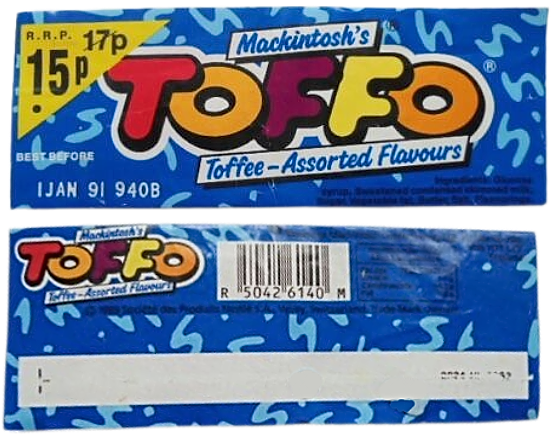
Mackintosh's Toffo wrapper from January 1990
2000 to present day
With the sweet-buying public become ever more conscious of what is contained in their food, and a lot of negativity surrounding the use of E numbers, in 2005, Rowntree’s pledged to stop using artificial colours, flavours or preservatives in any of their products.
In September 2006, there were a further 645 redundancies at the York factory. Smarties would now be manufactured in Hamburg, Dairy Box production moved to Spain, and Black Magic production moved to the Czech Republic.
In May 2009, a new jelly sweet hit the shelves named Rowntree's Randoms, which are still produced in 2023.
April 2012 saw the launch of another new jelly sweet called Fruit Bottles, (under the Rowntree's brand). However, these were short-lived.
In 2021, Fruit Pastilles became vegan friendly by removing the use of animal-derived gelatine.
Fruit Gums were also added to the vegan friendly range in 2023.
According to the official Rowntree's UK website, In 2023, products available to buy are Pick & Mix, Randoms, Randoms Squidgy Swirls, Randoms Juicers, Fruit Pastilles, Fruit Pastilles Strawberry & Blackcurrant, Dessert Pastilles, Fruit Gums, Jelly Tots, Tropical Tots, Berry Hearts, Jelly Snakes, Safari Mix, Gummy Bears and Ice Lollies (in 4 varieties).
I hope you enjoyed reading about the sweet history of Rowntree's.